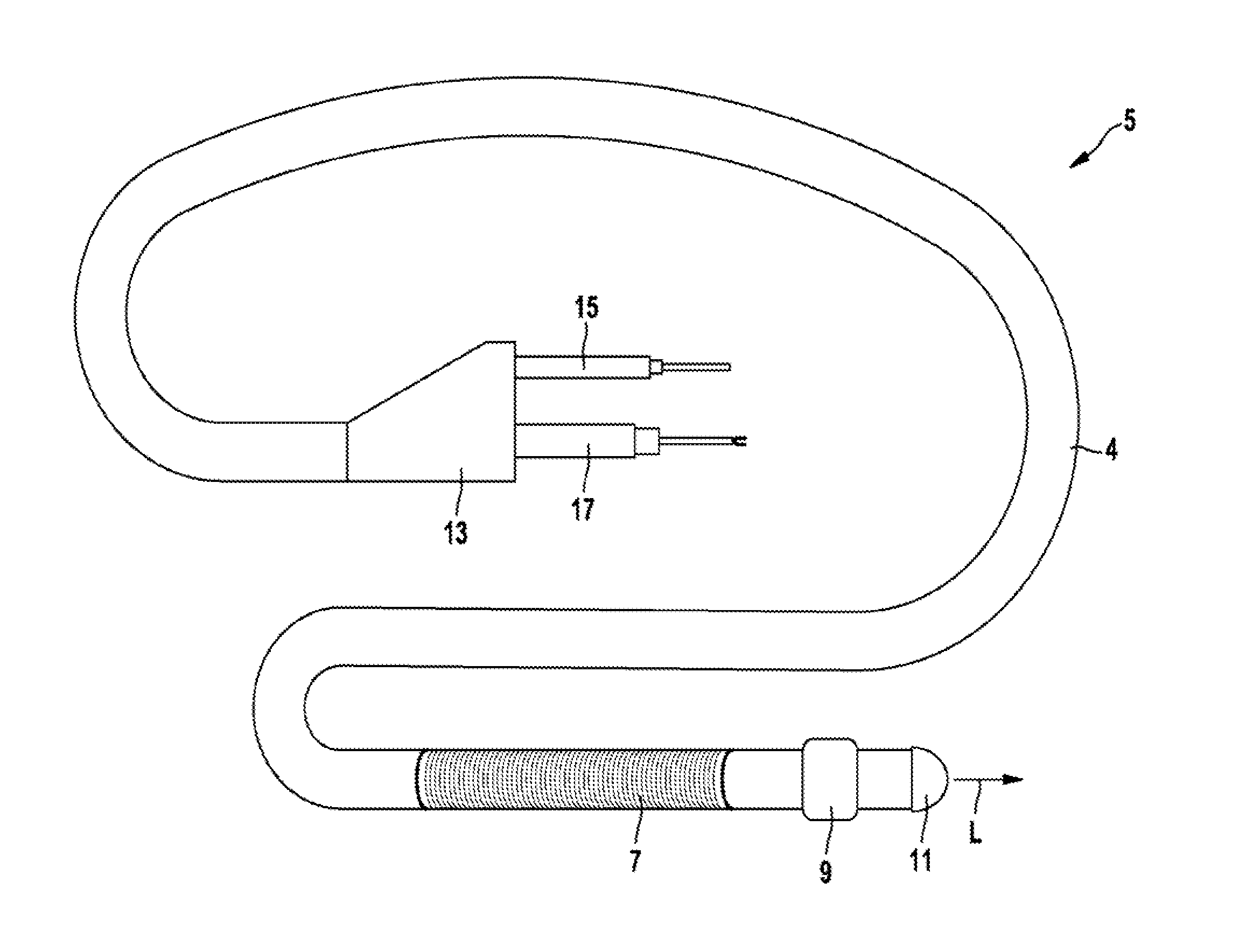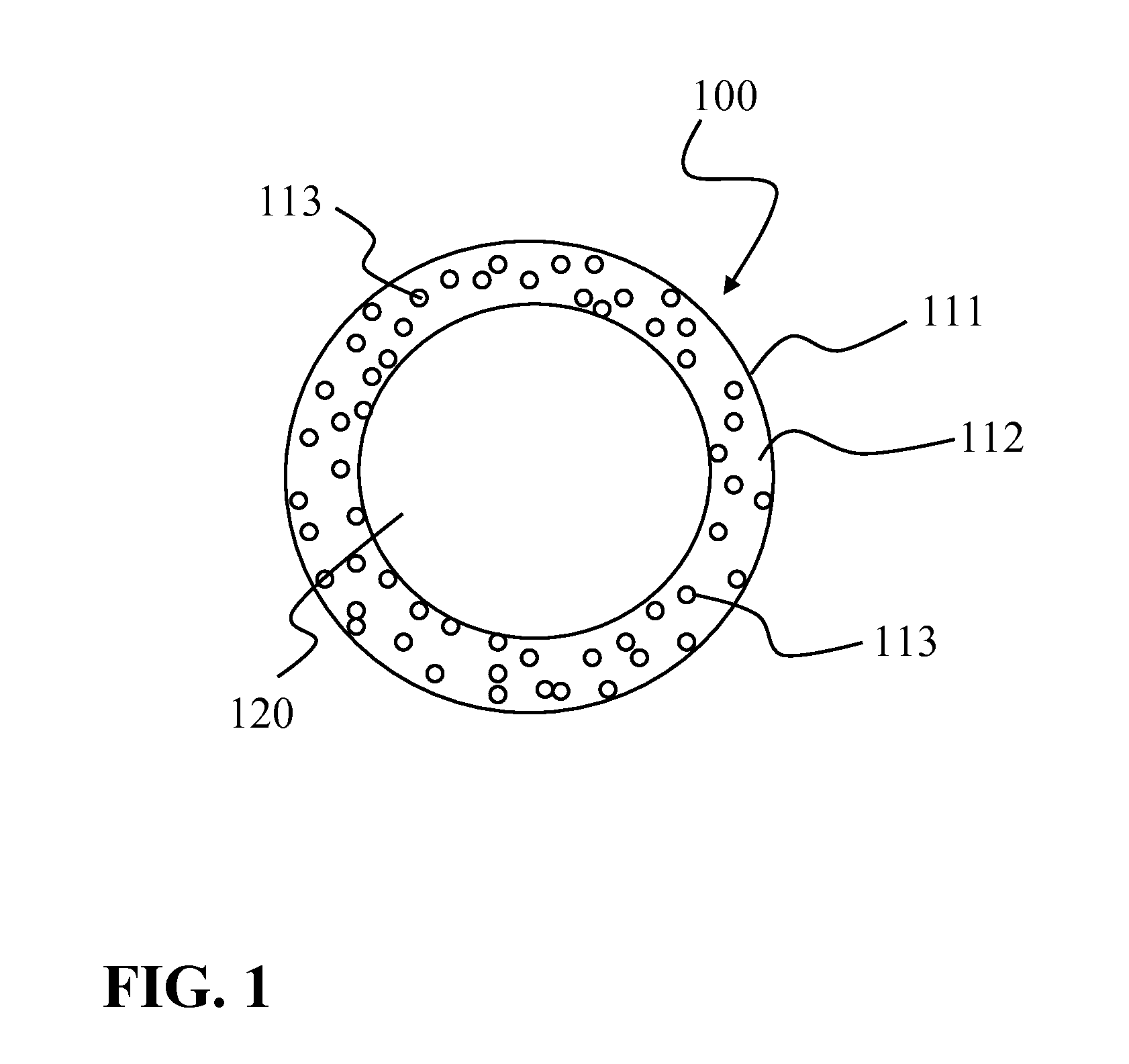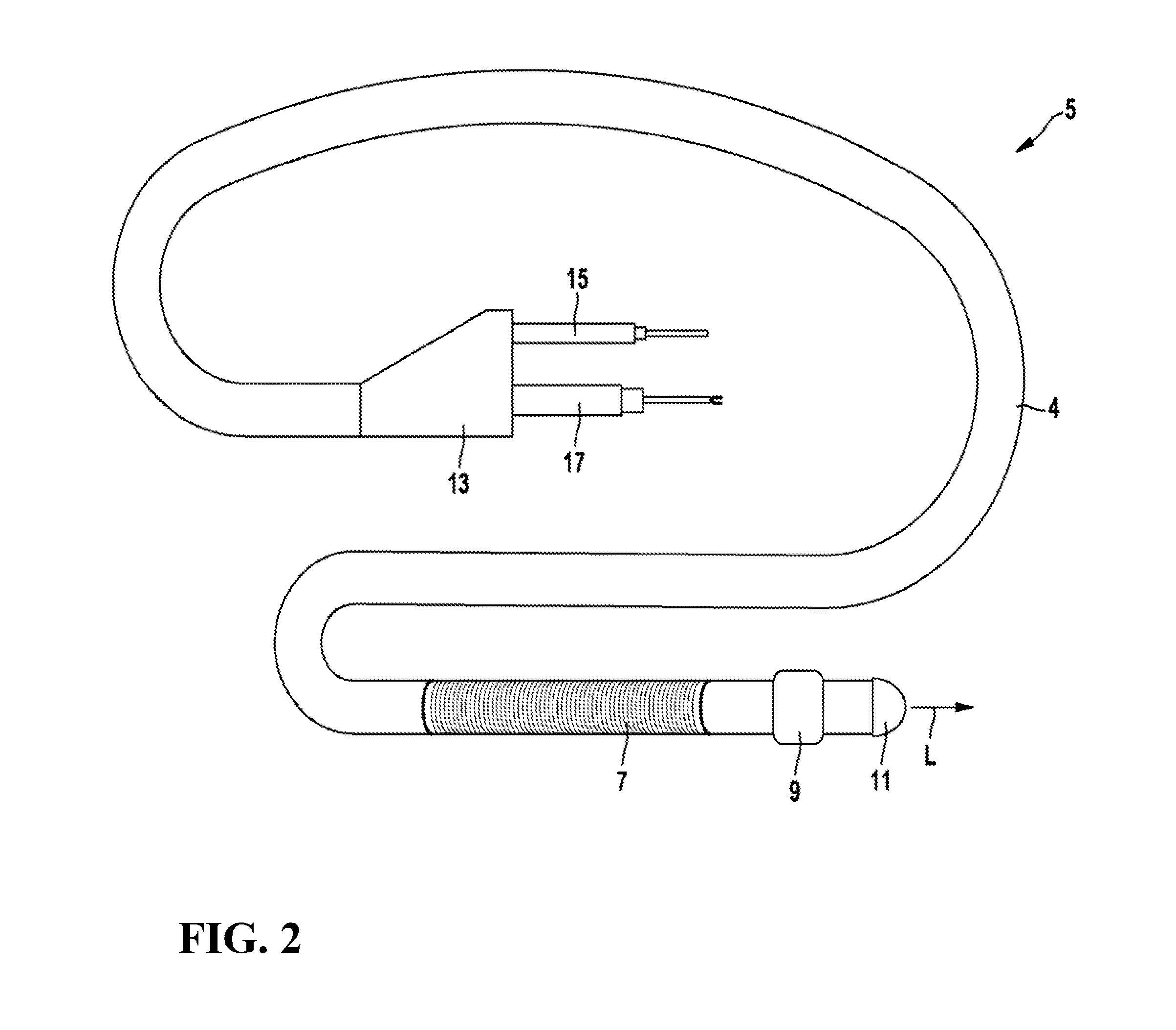Electrode Lead for Medical Use, Insulating Tube and Method for Producing the Same
a technology for electrode leads and insulating tubes, which is applied in the direction of external electrodes, hollow filament manufacturing, insulation conductors/cables, etc., can solve the problems of insufficient electrode lead for many application purposes, and insufficient long-term stability of polyurethane, etc., to achieve excellent bonding strength, high abrasion resistance, and increased abrasion resistance.
- Summary
- Abstract
- Description
- Claims
- Application Information
AI Technical Summary
Benefits of technology
Problems solved by technology
Method used
Image
Examples
Embodiment Construction
[0066]The insulating tube 100 illustrated in FIG. 1 comprises only a single layer 111, which has a substantially hollow-cylindrical design. The layer 111 is comprised of a base material matrix 112 made of, for example, LSR (liquid silicone rubber), in which the sphere-shaped particles 113, made of, for example, barium titanate, as the filler material are embedded. Such barium titanate particles 113 have an average diameter of approximately 2 μm. As an alternative or in addition, it is also possible to embed tantalum particles as the filler material into the base material matrix. Tantalum particles have an average diameter of approximately 40 μm. The continuous cylindrical opening 120 of the insulating tube 100 is used to accommodate the conductive elements, which at the distal end of the electrode lead form the electrode or electrodes, and at the proximal end form a connecting element for the electrically conductive connection to an electronic system. Both the barium titanate partic...
PUM
| Property | Measurement | Unit |
|---|---|---|
| diameter | aaaaa | aaaaa |
| diameter | aaaaa | aaaaa |
| length | aaaaa | aaaaa |
Abstract
Description
Claims
Application Information
 Login to View More
Login to View More - R&D
- Intellectual Property
- Life Sciences
- Materials
- Tech Scout
- Unparalleled Data Quality
- Higher Quality Content
- 60% Fewer Hallucinations
Browse by: Latest US Patents, China's latest patents, Technical Efficacy Thesaurus, Application Domain, Technology Topic, Popular Technical Reports.
© 2025 PatSnap. All rights reserved.Legal|Privacy policy|Modern Slavery Act Transparency Statement|Sitemap|About US| Contact US: help@patsnap.com



